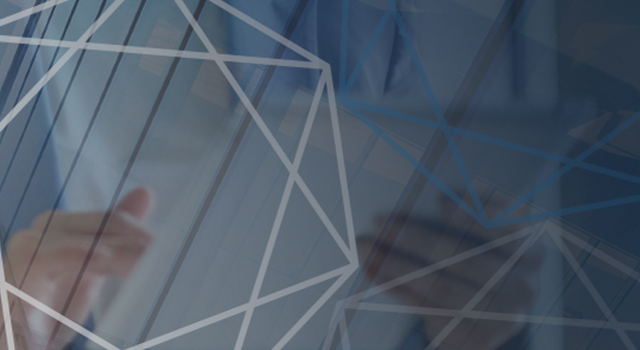According to a report published by the Federal Reserve Board of Governors, 43 percent of Americans who attended college have incurred debt for their education, 93 percent of which are in the form of student loans. Between 2006 and 2018, outstanding student loan tripled while average college tuition per year increased by almost $10,000 over the same period (see Figure 1: Outstanding Student Loans and Average College Tuition).
Figure 1: Outstanding Student Loans and Average College Tuition
As of the first quarter of 2020, outstanding student loan balances stood at an estimated $1.67 trillion, with private student loans accounting for about 8 percent, or $131.81 billion, of the market. Although private student loans comprise a relatively small portion of the total outstanding student debt, they have been riding a decade of strong growth. While federal loan origination volume fell by more than 25 percent between the 2010-11 and 2018-19 school years, over the same time period the volume of annual private student loan originations increased by almost 78 percent. In fact, between 2008 to 2019, the growth in the balance of outstanding private loans has been greater than that of nearly all other consumer financial product, including auto loans, credit card balances and mortgages. At the end of 2019, outstanding private student loan debt was 71 percent greater than it had been a decade earlier.
Key Statistics
Students can obtain student loans through either the federal student loan program or private credit providers. Often, borrowers of federal loans also use private loans as a way to cover expenditures beyond federal loan limits. Unlike federal student loans, private student loans typically require credit checks during the application process. Private student loan lenders generally have greater flexibility and discretion than federal agencies and may offer borrowers terms and rates depending on their credit history.
Using the Survey of Consumer Finances, we plotted the distribution of interest rates on private and federal student loans in 2019 (see Figure 2: Distribution of Interest Rates in 2019). While both federal and private student loans had a comparable spread of interest rates in this sample, it is worth noting that federal student loans have a fixed interest rate for the life of the loan, while a private student loan can have variable rates.
Figure 2: Distribution of Interest Rates in 2019
The private student loan market features several large lenders such as Sallie Mae and Navient, which primarily focus on student loans (see Figure 3: Private Student Loan Market by Entity). Other active participants in this market include banks such as Wells Fargo and Discover, which include private student loans in their overall portfolio of consumer financial products. However, a large chunk of the market is comprised of smaller entities such as fintech firms and private nonbank education lenders, amongst others. Collectively, these smaller entities hold nearly a third of the private student loan market, as measured by outstanding loan balance.
Figure 3: Private Student Loan Market by Entity
Private student loans are also packaged into Student Loan Asset-Backed Securities (“SLAB”). SLABs help to diversify lending risk by pooling loans into securities and provide varieties of investment opportunities to investors with different risk appetites. Figure 4: Issuance of Private SLABs, October 2019 –October 2020 shows that the top issuers in the private student loan market issued new private-SLABs worth approximately $15 billion.
Figure 4: Issuance of Private SLABs, October 2019 –October 2020
Student Loan Default
With respect to delinquency and default system, there are considerable differences between private and federal student loans. For one, private student loans are generally much less lenient when it comes to missed payments. Federal student loans programs allow a nine-month grace period in the case of missed payments whereas private student loans could be in delinquency the minute a payment is missed.
Furthermore, borrowers of federal student loans may have more options that allow them to transition out of delinquency, such as loan rehabilitation and loan consolidation. Such options are generally very limited for borrowers with private student loans. Many private lenders will charge off a loan after 120 days of missed payments, leaving the door shut to borrowers who want to negotiate a workout agreement. In addition to more loan workout options, federal loans also have deferment, income-based repayment, and loan forgiveness programs that are generally not offered by private lenders.
Finally, when a borrower defaults, the government generally has more means of collection, including garnishing wage and seizing tax refund. Private lenders often rely on lawsuits as their main collection tools.
In recent times, delinquency and default in private student loans has been low. During the COVID-19 pandemic, low default rate is likely the result of proactive efforts by lenders to provide forbearance agreements to lenders. Figure 5: Status of Private Student Loans, 2020 Q1 provides a snapshot of the status of student loans as of the first quarter of 2020. Approximately five percent of private student loans were in forbearance, more than doubling since the last quarter of 2019, during which period forbearance utilization was about two percent.
As part of the government’s COVID-19 relief efforts, federal student loans have been placed on interest-free forbearance starting in March 2020 through at least January 2021. For private student loans, servicers have implemented various measures to accommodate borrowers who may be struggling to make payments for COVID-19 related reasons. For instance, some private student loan servicers waiving late fees for a period of time, expanding their financial hardship assistance, or automatically granting one to two months of forbearance upon borrower request.
Figure 5: Status of Private Student Loans, 2020 Q1
For any additional inquiries, please contact info@vegaeconomics.com.






